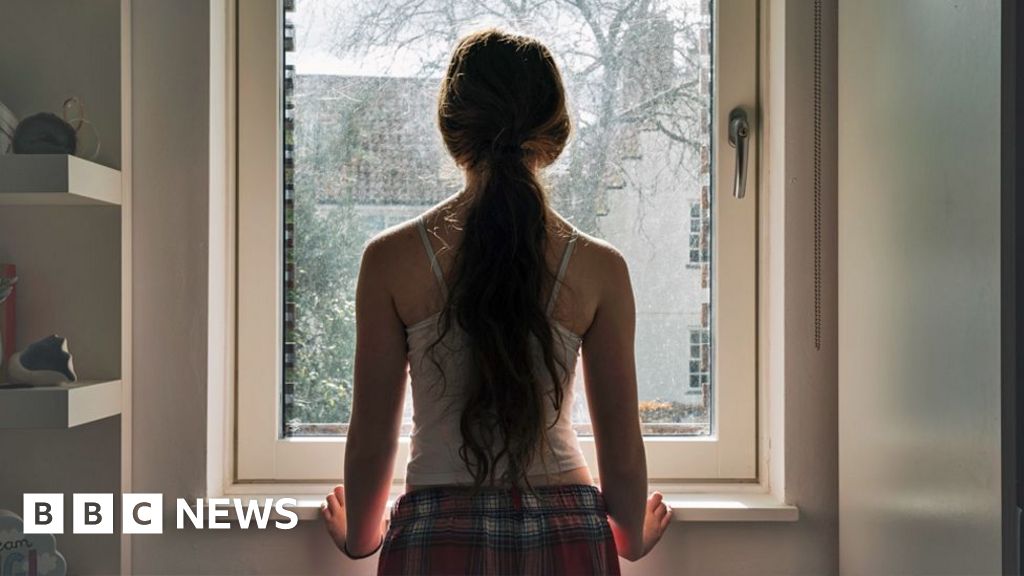Fifteen-year-old Lucy gazes out of her bedroom window, her fingers lightly tracing the patterned curtains. For two years, she has battled an invisible foe—anxiety that crept in like a thief in the night, stealing her sense of security. Just two years ago, panic attacks began to overshadow the casual joy of adolescence. “I was scared. I didn’t know what was happening to me,” Lucy shares, her voice trembling slightly.
Understanding Adolescent Anxiety in Today’s World
Lucy’s story is far from an isolated incident. Recent NHS statistics indicate that one in five children and young people aged eight to 25 suffers from probable mental health disorders, a figure that has alarmed researchers and educators alike. This disquieting rise comes at a time when the pressures of social media, academic performance, and relationship dynamics intensify, steering young minds down tumultuous paths.
The Roots of Rising Anxiety
The adolescent years are a developmental crucible, marked by drastic emotional fluctuations and societal pressures. Dr. Andrea Danese, a leading child psychiatrist at King’s College London, explains this phenomenon in biological terms: “Teenagers often experience heightened emotions before they’ve developed the skills to regulate them. This dissonance can lead to feelings of anxiety and desperation.” Hormones, sleep disruptions, and academic stressors only exacerbate this tumult.
The Biology Behind the Storm
- Brain Development: Parts responsible for emotions mature before those for self-control.
- Hormonal Changes: Accelerated hormonal changes can amplify emotional responses.
- Social Pressures: Increased scrutiny from peers and online platforms heightens stress.
In a study conducted by the British Psychological Society, nearly 70% of adolescents reported feeling overwhelmed by academic pressures, leading to an increase in mental health struggles. Schools, which traditionally provide a safe haven, can often morph into pressure cookers, where success is defined by grades rather than well-being.
Identifying When to Seek Help
So how do parents distinguish between typical teenage angst and a more significant crisis? While moodiness, social withdrawal, and anxiety about performance can be commonplace, Prof. Danese notes that certain behaviors may indicate a need for intervention:
- Persistent irritability or extreme mood swings
- Withdrawal from friends or activities
- Significant changes in appetite or sleep patterns
For Lucy, the tipping point came when panic attacks invaded public spaces, rendering her unable to participate in school activities. After a six-month struggle to manage her anxiety alone, her family sought professional guidance and enrolled her in cognitive behavioral therapy (CBT). “It has changed everything,” she reflects, a spark returning to her eyes.
Communicating to Heal
Dr. Sandi Mann, a child psychologist, emphasizes the role of communication in combating anxiety. “Making space for young people to express their feelings is vital. They need to know their thoughts and fears matter.” Creating an environment where children can openly discuss their anxieties fosters resilience and emotional intelligence.
Fostering Resilience
Here are key strategies parents can use to support their children’s emotional health:
- Encourage open dialogues about feelings and fears.
- Normalize discussions around setbacks; validate their experiences.
- Teach problem-solving techniques to tackle anxiety directly.
While immediate action can appear daunting, building a framework for resilience equips children to handle future challenges more effectively. Ms. Stevie Goulding, who leads a helpline for Young Minds, states, “When parents encourage autonomy and validate emotions without rushing to ‘fix’ every problem, that’s when they truly empower their children.”
When Professional Help is Necessary
Despite efforts at home, there comes a time when professional assistance becomes imperative. Indicators of deeper issues include self-harm, extreme shifts in behavior, and expressions of hopelessness. Dr. Elaine Lockhart, chair of the Royal College of Psychiatrists’ child and adolescent faculty, urges parents to recognize that “mental health struggles are not a failing; they are a reality for many children.”
For families navigating this labyrinth of emotional turmoil, local resources and mental health services can offer lifelines. However, the NHS’s extended waiting times often leave families in limbo. Sarah, a single mother battling the system for her son’s appointment, remarks, “It’s emotionally draining. Recognizing your child needs help is heartbreaking, but waiting months for support feels like an eternity.”
Lucy’s resurgence continues to unfold, as she balances coping strategies alongside therapy. Although the journey has been harrowing, her resilience stands as a testament to the power of proactive mental health engagement. With communities and caregivers now more informed, the hope is that fewer children will navigate these mental health crises alone. As Lucy puts it, “I still have my days, but I’m learning to breathe through them.”
Image Source: www.bbc.com


